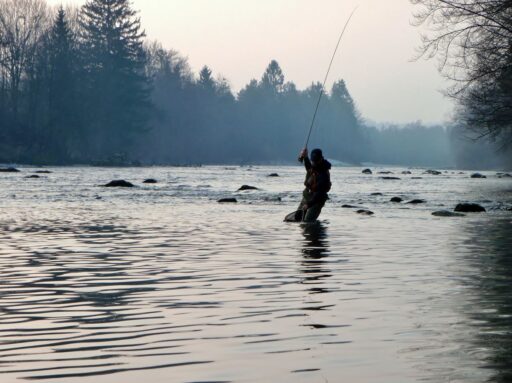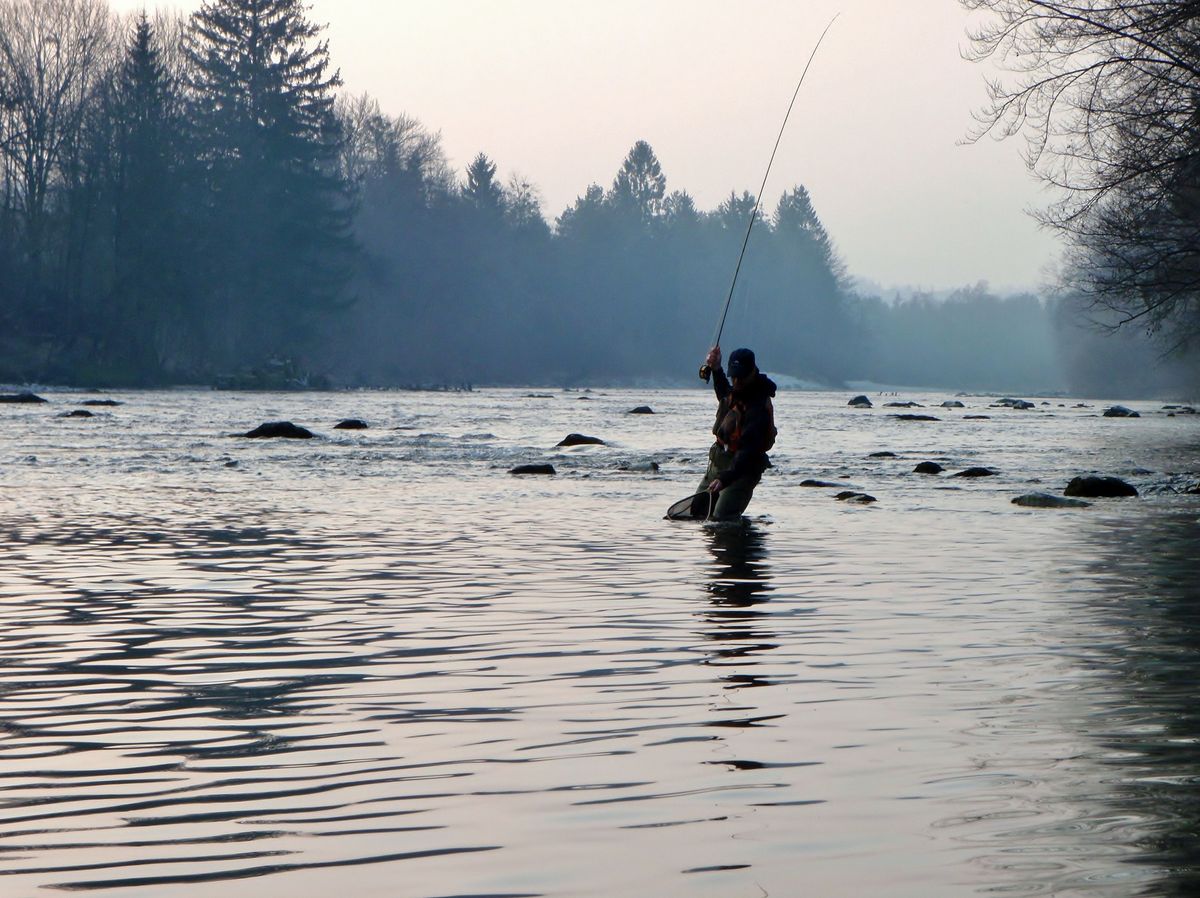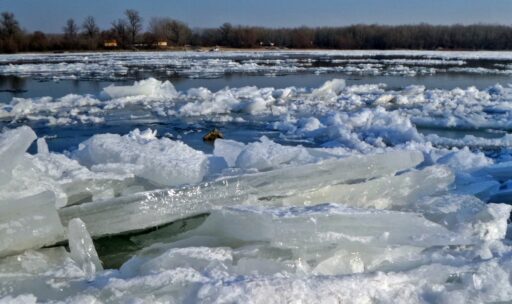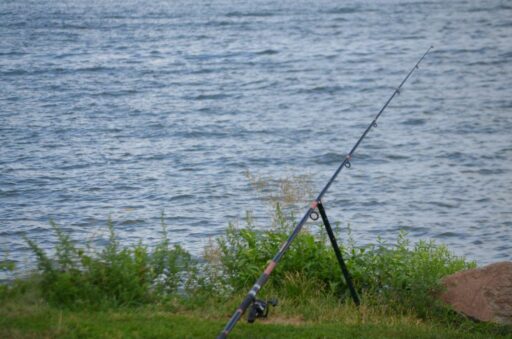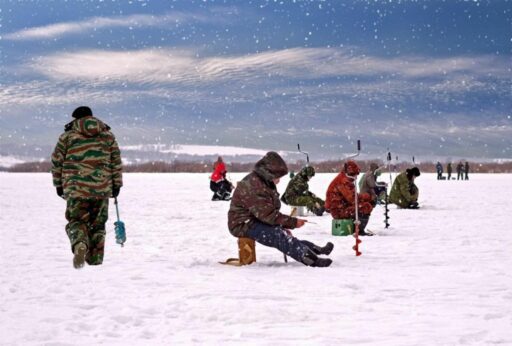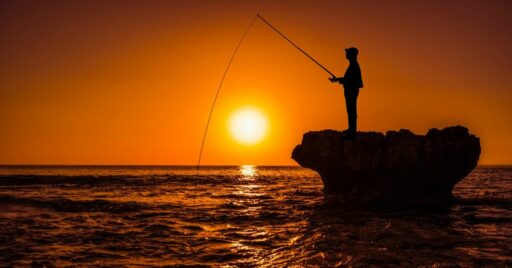Ice fishing for Walleye is a time-honored tradition that thrives during the winter months, especially in the Midwest and Great Lakes regions. Anglers eager to reel in these coveted fish through the ice can benefit from specialized gear, strategic techniques, and a mindful approach to safety and location selection. This guide provides essential insights into choosing the best ice fishing rods and other equipment tailored for Walleye, as well as tips on tactics, safety, and finding the ideal fishing spots to ensure a successful and enjoyable ice fishing experience.
Key Takeaways
- Selecting the right ice fishing rod for Walleye involves considering rod sensitivity, length, and power to match the specific behavior of Walleye under ice conditions.
- Understanding Walleye behavior, such as their location and feeding patterns during different ice fishing seasons, is crucial for effective jigging and other techniques.
- Safety on the ice is paramount; always check ice thickness, prepare for extreme cold, and have emergency protocols and gear in place before venturing out.
- The best locations for ice fishing Walleye include lakes and rivers known for their Walleye populations, with attention to seasonal movements and advice from experienced local anglers.
- Lure selection is important, with local favorites like the Berkley Ripple Shad and Z-Man PaddlerZ being highly effective, especially in off-color waters.
Essential Ice Fishing Gear for Walleye

Choosing the Right Rod
Selecting the ideal ice fishing rod for walleye is crucial for a successful outing. The right rod will not only improve your sensitivity to bites but also ensure you have the strength to reel in your catch. When considering your options, focus on the rod’s length, action, and power rating, as these factors will significantly influence your ability to detect and respond to a walleye’s subtle nibbles beneath the ice.
- Length: Shorter rods offer better control for jigging, while longer rods are beneficial for hook-setting leverage.
- Action: A medium-light to medium action is preferred for the balance of sensitivity and strength.
- Power: Look for a medium power rating to handle the size and fight of walleye.
Remember, the rod should feel comfortable in your hands and match your fishing style. It’s about finding a balance between personal preference and the technical specifications that suit walleye ice fishing.
While there are many options on the market, some standout models have been recognized for their excellence. The St. Croix Custom Ice Perch Seeker is noted for its overall performance, and the CLAM Outdoors Katana Combo offers a great rod and reel package. For those looking for the latest advancements, the DAIWA Kage KAG28L has been highlighted as a top new rod. It’s important to consider these recommendations but also to test different rods to find the one that feels right for you.
Reels that Withstand the Cold
When ice fishing for walleye, selecting a reel that can perform in sub-zero temperatures is crucial. The ideal reel should have a smooth drag system and be able to resist freezing. Reels specifically designed for ice fishing often feature more robust internal components and lubricants that remain fluid in cold weather, ensuring reliable performance.
- Look for reels with an anti-freeze design.
- Choose models with a comfortable grip that can be used with gloves.
- Prioritize reels with a large spool to accommodate thicker line for bigger fish.
It’s important to remember that a reel’s durability and cold resistance can make the difference between a successful catch and a missed opportunity. Regular maintenance and proper storage are also key to extending the life of your ice fishing gear.
While many reels are marketed as suitable for ice fishing, it’s essential to read reviews and consider the experiences of other anglers. This can help you find a reel that not only withstands the cold but also matches your fishing style and the specific challenges of targeting walleye under the ice.
Line and Leader Selection
Selecting the right line and leader is crucial for successful ice fishing for walleye. The type of line you choose can greatly affect your sensitivity to bites and the presentation of lures. Fluorocarbon lines are favored for their low visibility under water and resistance to abrasions, making them ideal for clear water conditions and finicky walleye.
When it comes to leaders, it’s important to match the strength and durability to the conditions and the size of the fish targeted. A good leader can prevent line breaks and loss of lures or fish. Here’s a quick guide to some popular choices:
- Seaguar Gold Label Fluorocarbon Leader: Exceptionally thin and strong.
- Daiwa J-Fluoro Samurai: Camo fluorocarbon for stealth.
- Yo-Zuri Superfluoro: Clear leader, meticulously crafted.
- Sunline FC Sniper: Offers the latest generation of fluorocarbon technology.
Remember, the right line and leader not only help you catch more fish but also ensure that your gear lasts longer under the harsh conditions of ice fishing.
Experts, such as those from Outdoor Life, have tested and reviewed various lines and leaders, highlighting the best options for different species and techniques. When preparing for your next ice fishing adventure, consider these expert opinions to make an informed decision.
Top Ice Fishing Lures for Walleye
When it comes to ice fishing for walleye, selecting the right lure is crucial for a successful catch. Jigging spoons and minnows are highly effective, especially when the ice is around 4-5 inches thin. As the season progresses and walleye move offshore, anglers should focus on areas around reefs and rock piles. During the late season, walleye return to the shallows, becoming increasingly aggressive, which is the perfect time to use lures that mimic their natural prey.
Walleye in shallow water respond well to vertical jigging with small crankbaits, spinnerbaits, and rip baits. In off-color waters, paddle-tails such as the Berkley Ripple Shad and Z-Man PaddlerZ are recommended by locals for their effectiveness.
The following list includes some of the best walleye ice fishing lures of 2024, as highlighted by ‘Outdoor Life’:
- Rapala Jigging Rap
- Rapala Slab Rap
- Silver Streak Rattle Streak Spoon
- Clam Leech Flutter Spoon
Remember, the key to successful walleye ice fishing is to adapt your lure selection to the behavior of the fish throughout the season.
Strategies for Ice Fishing Walleye

Understanding Walleye Behavior in Ice Conditions
Walleye behavior under ice conditions is crucial for any angler looking to make a successful catch. Early ice fishing season is often the most productive time for targeting Walleye, as they are more accessible and active. However, safety should never be compromised, and ensuring solid ice conditions is paramount before venturing out.
During mid-season, Walleye tend to migrate offshore, seeking deeper waters along dropoffs and ledges. This behavior requires anglers to adapt their strategies, often moving further from shore and employing different jigging techniques with lures such as ice jigs and spoons.
As the season progresses, Walleye become increasingly aggressive, making late-season outings potentially very rewarding. Anglers should focus on areas around reefs and rock piles when the fish move offshore, and then shift to shallower waters as the fish return during the late season.
Understanding these patterns and adapting to the Walleye’s seasonal movements can significantly increase your chances of a successful ice fishing experience.
Effective Jigging Techniques
Mastering the art of jigging can significantly increase your chances of catching Walleye under the ice. Vertical jigging is a go-to method, especially when fish are holding close to the bottom or around underwater structures. The rhythmic motion of lifting and dropping the jig mimics the movement of prey, enticing Walleye to strike.
When jigging for Walleye, consider these points:
- Use jigs or jigheads that are heavy enough to maintain contact with the bottom.
- Experiment with different jigging cadences to find what triggers a bite.
- Employ live bait such as minnows or nightcrawlers for added attraction.
Remember, the key to successful jigging is to maintain a feel for your bait and to stay alert for the subtle bites that Walleye are known for.
In addition to technique, paying attention to the conditions can make a difference. Monitor water temperature and utilize sonar technology to locate active fish. As Walleye transition through various depths and feeding patterns, adjust your approach accordingly. Night fishing can also be highly productive, as Walleye often feed more aggressively after dusk.
Trolling Under Ice: Is It Possible?
While trolling is a popular open-water technique, its adaptation to ice fishing presents unique challenges. Traditional trolling, which involves moving a bait or lure through the water behind a slowly advancing boat, is not feasible under ice. However, anglers have developed innovative methods to mimic trolling beneath the ice.
Trolling under ice requires a different approach, focusing on the movement of lures rather than the boat.
One such method is the use of tip-ups with live bait, which can be set at various depths and locations, effectively ‘trolling’ a larger area. Another technique involves the strategic placement of jigging lines at different points and depths, simulating the lure movement of trolling.
- Use tip-ups with live bait or artificial lures
- Set lines at varying depths and intervals
- Jigging in a pattern that covers different water columns
While these methods do not replicate the exact experience of trolling in open water, they can be quite effective in enticing walleye to bite under ice conditions.
Timing Your Fishing for Peak Activity
Understanding the peak activity times for Walleye can significantly increase your chances of a successful catch. Walleye are known to be more active during low-light conditions, such as dawn and dusk. However, their behavior can vary with the seasons, and it’s crucial to adapt your approach accordingly.
In the spring, as Walleye transition through various depths and feeding patterns, it’s essential to monitor water temperature and utilize sonar technology. Techniques like vertical jigging and using jigs or shallow diving crankbaits become highly effective.
During the summer, focus on early morning and late evening periods when Walleye are most likely to feed aggressively. This is also a prime time to employ finesse tactics, as Walleye may be more selective due to increased fishing pressure and warmer water temperatures.
Remember that Walleye patterns change with each season, and they can generally bite year-round. Paying attention to fishing regulations is important, especially during spawning seasons when fishing may be closed.
Safety and Preparation for Ice Fishing

Checking Ice Thickness and Quality
Ensuring the safety of the ice is paramount before setting up for a day of walleye ice fishing. Always verify the ice thickness at multiple locations as ice can vary greatly even over a short distance. A minimum of 4 inches of clear, solid ice is recommended for an individual angler, with thicker ice required for groups or equipment.
- Use a chisel or auger to check ice thickness.
- Look for clear, solid ice. White ice or "snow ice" is only about half as strong as clear ice.
- Avoid areas with flowing water, such as near streams or springs, as the ice may be weaker.
Remember, ice thickness is not uniform. Always check the ice as you go, especially if you are moving to a new fishing spot.
While tools like the RAZR Scout can be helpful in measuring ice thickness, it’s important to use common sense and not rely solely on tools. Be mindful of the weather conditions leading up to your trip, as fluctuating temperatures can weaken ice quickly.
Dressing for Success in Extreme Cold
When venturing out for ice fishing, dressing appropriately is crucial for safety and comfort. The extreme cold demands a layered approach to clothing, starting with a moisture-wicking base layer to keep you dry. Insulating mid-layers, such as fleece or wool, trap heat close to the body, while a windproof and waterproof outer layer shields against the elements.
Essential items for any ice angler include:
- Thermal underwear
- Insulated bibs or pants
- A heavy parka or jacket
- Waterproof boots with moisture-wicking liners
- Wool or thermal socks
- Insulated gloves or mittens
- A warm hat or balaclava
Remember, the key to maintaining warmth is to avoid sweating. As you become active, shed layers as needed to stay comfortable without overheating.
Selecting the right apparel is not just about warmth; it’s also about mobility. Ensure that your clothing allows for a full range of motion so you can effectively handle your fishing gear. Pay special attention to gloves and boots, as these can impact your ability to feel and manage your rod and reel.
Navigating and Setting Up on the Ice
Successfully navigating and setting up on the ice is crucial for a productive day of walleye ice fishing. Begin by consulting a map of the area and identifying potential fishing spots. Once on the ice, use a GPS device or a compass to find your way to the chosen location. It’s important to move cautiously, especially in areas with snow cover that may disguise weak spots.
When setting up, consider the wind direction and position your shelter accordingly to maximize warmth and minimize exposure. Organize your gear within easy reach, and ensure your ice auger and electronics are ready for use. Here’s a simple checklist to follow:
- GPS device or compass
- Ice auger and accessories
- Shelter and heating equipment
- Fishing gear and tackle
- Safety equipment
Remember, the key to a successful setup is efficiency and safety. Double-check that all your gear is functioning properly before you begin fishing.
Emergency Protocols and Gear
When venturing onto the ice, safety should be your top priority. Always inform someone of your fishing location and expected return time. This simple step can be lifesaving in case of an emergency. Additionally, it’s crucial to carry a set of emergency gear tailored for ice fishing scenarios.
Essential emergency gear includes:
- A whistle or air horn for signaling distress
- Waterproof matches or a lighter for warmth and cooking
- A basic first aid kit for treating minor injuries
- Ice picks or claws for self-rescue if you fall through the ice
Remember, preparation is key to a safe ice fishing experience. Ensure you have all necessary safety equipment and know how to use it before heading out.
It’s also advisable to have a plan in place for rapid evacuation if conditions deteriorate. Keep a close eye on weather forecasts and ice conditions, and never take unnecessary risks for the sake of fishing.
Selecting the Best Ice Fishing Locations for Walleye

Top Lakes and Rivers for Walleye Ice Fishing
When the winter chill sets in and transforms lakes and rivers into icy playgrounds, walleye anglers gear up for some of the most exciting fishing of the year. Early ice often heralds the most active walleye bite, but safety is paramount; always verify that the ice is sufficiently thick before venturing out. As the season progresses, walleye typically migrate to deeper waters, presenting a greater challenge to reach them.
In the Midwest and Great Lakes regions, ice fishing for walleye is a cherished tradition. Experienced guides can enhance the experience by providing essential equipment like shanties and heaters, ensuring comfort and success. Michigan, in particular, is renowned for its walleye ice fishing, with anglers employing a variety of techniques such as jigging minnows or using spoons in deep waters.
Local knowledge is invaluable when ice fishing for walleye. Techniques and lure choices can vary significantly depending on water clarity and depth. For instance, in murky conditions, paddle-tail lures like the Berkley Ripple Shad may be the key to enticing a bite.
Remember to tailor your approach to the conditions and always prioritize safety when selecting your ice fishing destination.
Reading the Ice: Finding the Fish
Understanding the ice is crucial for locating walleye. Look for areas where the ice is clear and solid, as these often indicate stable, colder water beneath, which is preferred by walleye in winter months. Murky or snow-covered ice can suggest inconsistent water conditions that walleye might avoid.
- Check for pressure ridges and ice heaves, as these can create underwater structures that attract fish.
- Investigate areas near inlets and outlets, as moving water brings food and oxygen, drawing walleye.
- Use a spud bar to test ice thickness as you move, ensuring safety and finding spots where walleye may be holding.
When reading the ice, remember that walleye are often found in deeper areas during midday and shallower regions near dawn and dusk. This daily migration is key to choosing the right spot at the right time.
Local Insights: Tips from Experienced Anglers
Gleaning wisdom from seasoned ice fishers can turn an average day on the ice into a remarkable walleye haul. Local knowledge is often the key to unlocking the best fishing spots and techniques. Experienced anglers emphasize the importance of adapting to the day’s conditions and not sticking rigidly to a single strategy.
- Pay attention to the behavior of local wildlife, as it can indicate where the fish are biting.
- Experiment with different jigging rhythms and depths until you find what works.
- Ask around at bait shops or local forums for the latest hotspots and lure preferences.
Remember, the most successful anglers are those who observe and adapt. Conditions can change rapidly on the ice, and what worked yesterday may not work today.
While there’s no substitute for time spent on the ice, these tips can provide a valuable head start. Keep an open mind, and don’t be afraid to try new approaches as you seek out the elusive walleye beneath the ice.
Seasonal Movements of Walleye
Understanding the seasonal movements of Walleye is crucial for selecting the best ice fishing spots. During the winter months, Walleye tend to inhabit deeper waters, where they can be more challenging to locate. As the ice fishing season draws to a close, you’ll often find Walleye moving inshore again, preparing for their spring activities.
In spring, as Walleye enter their pre-spawn phase, they are typically found near the bottom at depths exceeding 15 feet. Post-spawn, they become more aggressive feeders. By summer, they migrate to deeper waters and underwater structures such as humps and ledges, often referred to as the "Walleye chop". It’s during the early fall that Walleye transition back to shallower waters.
To catch more Walleye during daylight hours, focus on scouting locations offshore. Sunken islands, humps, reefs, and muddy flats are prime spots for midday Walleye.
Remember, Walleye are adaptable and will bite year-round, but their patterns shift with the seasons. Pay attention to fishing regulations, especially during spawning seasons when fishing may be restricted.
Conclusion
As we’ve explored the top ice fishing rods for targeting Walleye, it’s clear that the right equipment can make a significant difference in your fishing success. Whether you’re braving the early ice in Wisconsin, jigging in the deep waters of Michigan, or seeking the thrill of a mid-season catch in Minnesota, the right rod will enhance your experience and improve your chances of landing that prized Walleye. Remember to always check ice conditions, stay safe, and consider the local wisdom on lure selection and techniques. Ice fishing for Walleye is not just a sport; it’s a tradition deeply rooted in the culture of the Midwest and beyond. With the insights from this guide, you’re now better equipped to join the ranks of successful anglers who cherish the challenge and the reward of reeling in these magnificent fish through the ice.
Frequently Asked Questions
What is the best time of day to ice fish for walleye?
Early morning and late afternoon into evening are typically the best times to ice fish for walleye as they tend to feed more actively during these periods.
What kind of rod is recommended for ice fishing walleye?
A medium-light to medium-action ice fishing rod with good sensitivity and enough backbone to handle walleye is recommended.
Can you troll for walleye under the ice?
Trolling under the ice is not a common practice due to the nature of ice fishing, but some anglers use a technique called ‘ice trolling’ by moving from hole to hole and actively jigging.
What are some effective lures for catching walleye through the ice?
Jigging spoons, jigging rapalas, and live bait setups such as a minnow on a jig or tip-up are effective lures for catching walleye in ice fishing conditions.
How thick should the ice be for safe ice fishing?
For ice fishing, the ice should be at least 4 inches thick for a single angler on foot. However, for a group of people, 6-8 inches is safer, and for vehicles, much thicker ice is required.
Where are some of the best locations for ice fishing walleye?
The best locations for ice fishing walleye include major fisheries in the Midwest and Great Lakes area, as well as known walleye lakes in states like Wisconsin, Minnesota, and Michigan.
